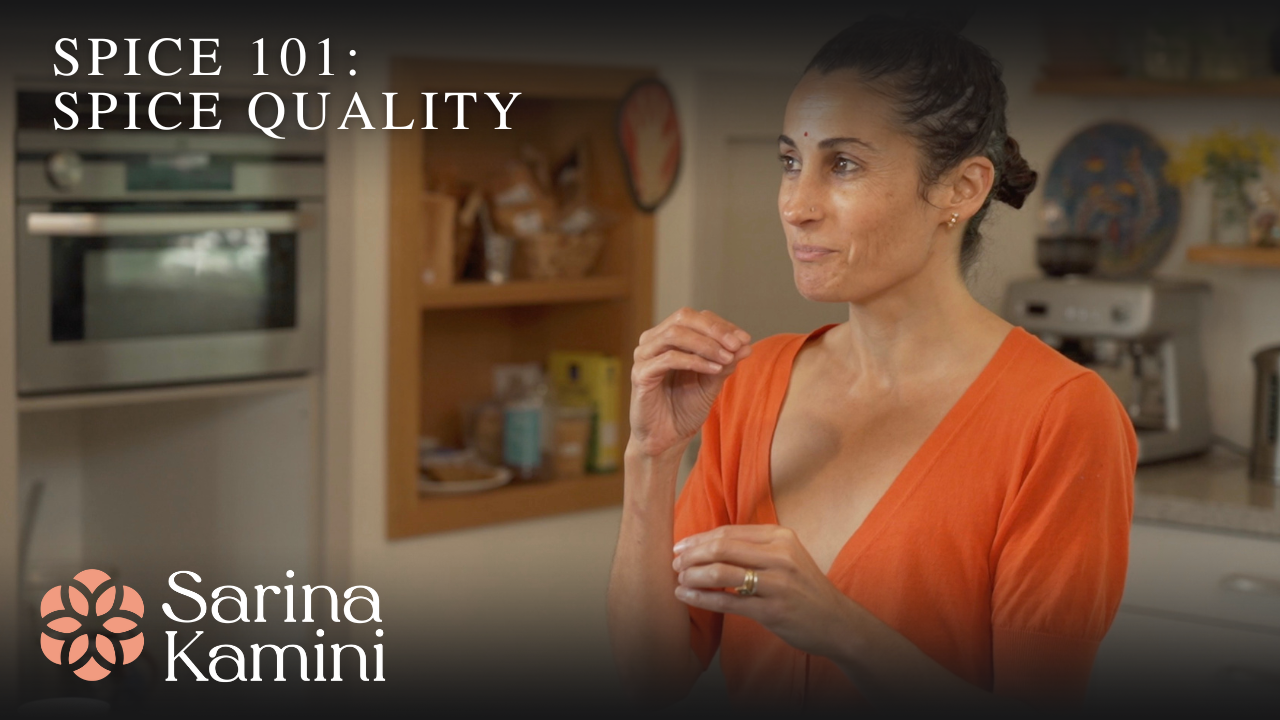SPICE QUALITY
The quality of your spices is determined by three key factors: how it’s grown—so whether or not it is high quality or organic; how it’s stored; and how old it is.
I roped Travis into tasting so that you can see it doesn’t take a trained palate to detect differences in spice potency. I interrupted him a bit! But he was great at detecting flavour shifts and really enjoyed the process.
This first three minutes talk about why spice quality matters. The latter three minutes shows how to taste the different between old and new spice.
Look to this video for tips on spice storage.
SPICE QUALITY TIPS:
If you’re new to spices, the best way to begin training your palate is to take out the old spices in your pantry and buy new, organic versions of those same spices. Now try them side by side to see how much more complex and beautiful the expression of each spice is. This comparison will build in your personal “flavour library” of memory and sensory experience and help you on your way to creating a more personal relationship to spices.
To find top quality spices, try shopping at a specific spice retailer, or at delicatessens that specialise in boutique and organic ingredients. Organics matter with spices, and the difference in cost is relatively minimal. A note on this: not all spices are available as organic—kala namak being just one example.
Think of the “freshness” of your dried spices as being AS important as the freshness of your produce.
If a spice has been in your cupboard for more than 12 months discard it. If you need a system to better rotate your spices, then try these traditional masala dabbas or spice tins. This video explains how they work, and why they are so indispensable in my Kashmiri kitchen.

